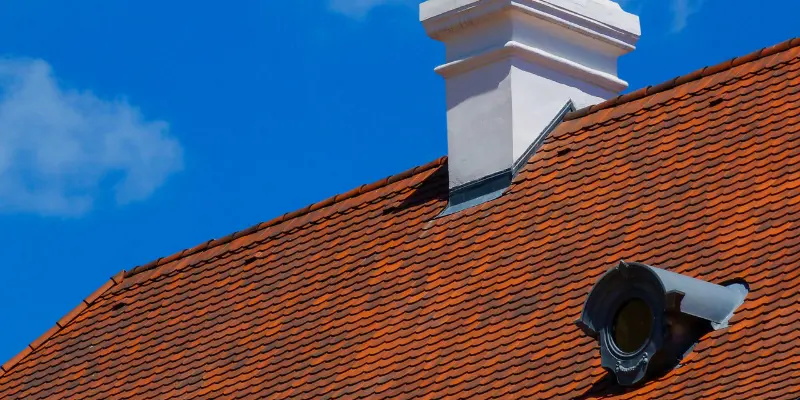Roof flashing is a crucial component of any roofing system. It plays a vital role in protecting your home from water damage by directing water away from vulnerable areas. In this comprehensive guide, we will explore what flashing on a roof is, why it is important, and how to maintain and repair it. Understanding flashing will help you keep your roof in top condition and extend its lifespan.
Flashing is a material, usually metal, installed on a roof to prevent water penetration at joints or intersections. It is essential for sealing and protecting areas where the roof meets walls, chimneys, skylights, and other structures. In this article, we will delve into the details of flashing, its types, and its importance in maintaining a watertight roof.
What is Flashing on a Roof?
Roof flashing is designed to direct water away from seams and joints, preventing leaks and water damage. It is typically made from durable materials like aluminum, copper, or galvanized steel.
Types of Roof Flashing
There are several types of roof flashing, each serving a specific purpose:
- Step Flashing: Used where the roof meets a vertical surface, like a wall.
- Counter Flashing: Installed over step flashing to provide additional protection.
- Valley Flashing: Placed in the valleys where two roof slopes meet.
- Drip Edge Flashing: Installed along the roof edges to guide water away from the fascia.
- Vent Pipe Flashing: Seals around pipes that penetrate the roof.
Importance of Roof Flashing
Flashing is critical for maintaining the integrity of your roof. Without it, water can seep into your home, causing structural damage, mold growth, and other costly problems.
Protecting Vulnerable Areas
Flashing protects vulnerable areas of the roof, such as valleys, chimneys, and skylights, from water infiltration.
Preventing Water Damage
By directing water away from seams and joints, flashing prevents leaks and water damage that can compromise the roof’s structure.
Extending Roof Lifespan
Properly installed and maintained flashing can significantly extend the lifespan of your roof by preventing water-related issues.
How to Maintain Roof Flashing
Regular maintenance of roof flashing is essential to ensure it remains effective.
Regular Inspections
Inspect your roof flashing at least twice a year and after any severe weather events. Look for signs of damage, such as rust, cracks, or loose flashing.
Prompt Repairs
Address any issues with your flashing promptly to prevent water damage. Small repairs can save you from costly roof repairs in the future.
Professional Maintenance
Consider hiring a professional roofing contractor for regular maintenance and inspections. They have the expertise to identify and fix potential problems.
How to Repair Roof Flashing
If you notice damage to your roof flashing, it is important to repair it as soon as possible.
DIY Repairs
For minor issues, you can perform DIY repairs using roofing cement, sealant, and replacement flashing. Ensure you follow proper safety precautions and guidelines.
Professional Repairs
For significant damage or if you are unsure about the repairs, hire a professional roofing contractor. They have the skills and tools to perform effective repairs and ensure your roof remains watertight.
Table: Types of Roof Flashing and Their Uses
| Type of Flashing | Description | Use Case |
| Step Flashing | Metal pieces bent at a 90-degree angle | Where roof meets vertical surfaces (e.g., walls) |
| Counter Flashing | Installed over step flashing | Provides additional protection |
| Valley Flashing | Metal flashing installed in roof valleys | Directs water away from valleys |
| Drip Edge Flashing | Installed along roof edges | Guides water away from fascia |
| Vent Pipe Flashing | Seals around pipes penetrating the roof | Prevents leaks around vent pipes |
FAQs About Roof Flashing
Q1: What is the purpose of roof flashing?
A1: Roof flashing directs water away from seams and joints, preventing leaks and water damage. It protects vulnerable areas like valleys, chimneys, and skylights.
Q2: How often should roof flashing be inspected?
A2: Inspect roof flashing at least twice a year and after severe weather events. Regular inspections help identify and address issues early, preventing damage.
Q3: Can I repair roof flashing myself?
A3: Minor flashing repairs can be done DIY with roofing cement, sealant, and replacement flashing. For significant damage, it’s best to hire a professional.
Q4: What materials are used for roof flashing?
A4: Roof flashing is typically made from durable materials like aluminum, copper, or galvanized steel. These materials provide long-lasting protection against water infiltration.
Q5: How does flashing extend the lifespan of a roof?
A5: Flashing prevents water-related issues like leaks and structural damage, which can compromise the roof’s integrity. Proper flashing maintenance extends the roof’s lifespan.
Q6: What are common signs of flashing damage?
A6: Common signs of flashing damage include rust, cracks, loose flashing, and water stains inside the home. Prompt repairs are essential to prevent further damage.
Conclusion
What flashing on a roof is and its importance is crucial for maintaining a watertight and durable roof. Regular inspections, prompt repairs, and professional maintenance can help ensure your roof flashing remains effective. For expert roofing services in Miami, FL, trust Hasid On The Roof Florida. Our experienced team is dedicated to providing top-quality roof maintenance and repair to protect your home from water damage.

